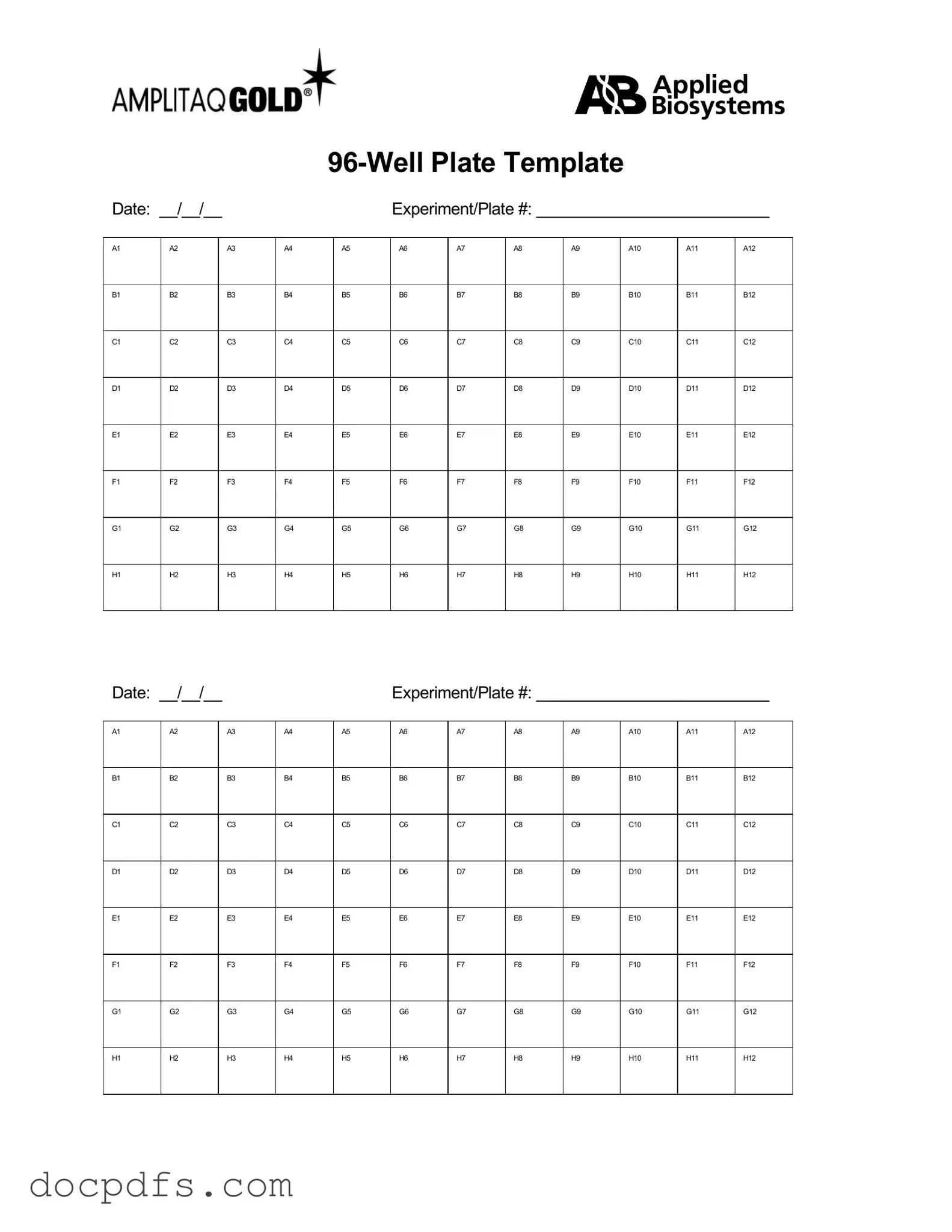The 96 Well form is an essential tool in various fields, particularly in laboratory settings and research environments. This form allows for the organization and documentation of data collected from experiments conducted in a 96-well plate format, which is commonly used for high-throughput screening. Each well can hold a small volume of liquid, making it ideal for testing multiple samples simultaneously. The design of the form typically includes sections for recording sample IDs, reagent details, and experimental conditions, ensuring that all necessary information is captured efficiently. Researchers benefit from the structured layout, which promotes clarity and reduces the risk of errors during data entry. Additionally, the 96 Well form often incorporates features that facilitate easy tracking and analysis of results, ultimately enhancing the reproducibility of experiments. By streamlining the documentation process, this form plays a crucial role in advancing scientific research and improving outcomes in various applications.
